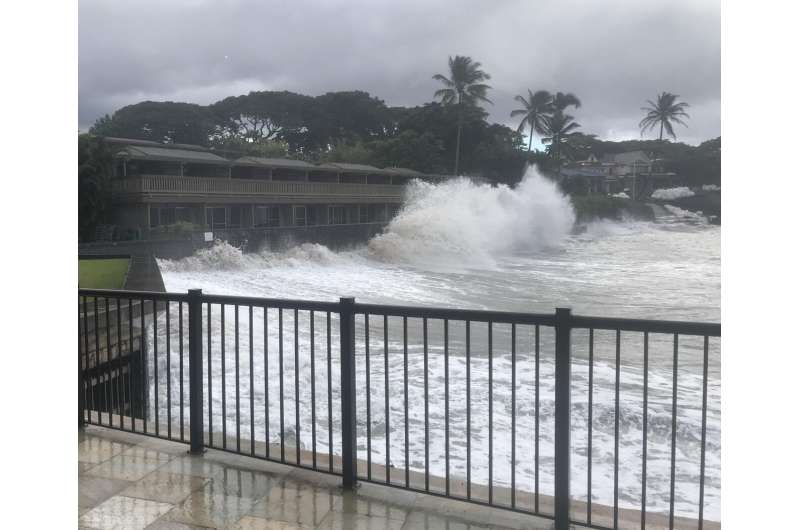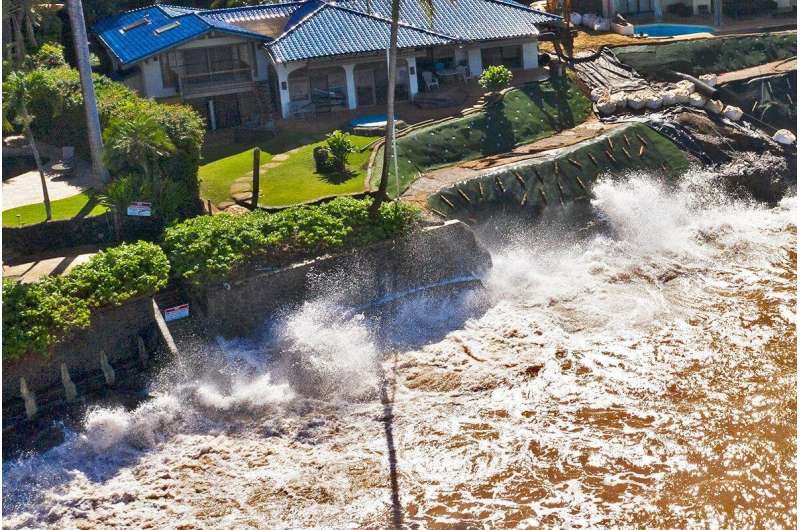New tool provides wave flooding predictions for West Maui

A provides predictions of coastal flooding in West Maui under various scenarios of sea-level rise and a range of wave events for community members, property owners, businesses, as well as state and county officials. The West Maui Wave-Driven Flooding With Sea Level Rise tool was created by researchers at the Pacific Islands Ocean Observing System (PacIOOS) based at the University of Hawai驶i at M膩noa.
The combination of high sea levels and large swells can result in significant coastal erosion, damage to infrastructure and properties, and land-based sedimentation that impairs coastal water quality. Hawai驶i has experienced an increase in wave plus tide-driven flooding in recent years, and these events are expected to grow in numbers and duration due to sea-level rise and changing wave energies.
"Along with other planning tools, we hope these scenarios that are tailored for West Maui will be useful to inform land use planning," said Tara Owens, co-investigator on the grant that funded this work and extension specialist with UH Sea Grant College Program.
Factors impacting West Maui
The water level鈥攁nd the associated risk of coastal flooding鈥攊n West Maui is impacted by several factors that are included in the flooding product: daily tidal cycles, long-term sea-level rise, moderate to large wave events, and the slowly-oscillating ocean sea level height around Maui (caused in part by El Ni帽o). PacIOOS, based at UH M膩noa's School of Ocean and Earth Science and Technology, created the new West Maui Wave-Driven Flooding With Sea Level Rise tool by adopting a next-generation modeling approach to combine these factors and augment the annual high wave flooding model represented in the .

In addition to chronic coastal erosion leading to severe damage of properties, wave overtopping and flooding also pose a major safety concern to infrastructure, in particular to Honoapi驶ilani Highway, the major access corridor to West Maui.
"Coastal managers and planners in Hawai'i rely on science-based information that can support decision making," said County of Maui Coastal Planner Jim Buika. "This scenario-based tool is powerful because it is locally specific and easy to use. It can guide us to promote sustainable land use and environmental protection."
Provided by University of Hawaii at Manoa


















